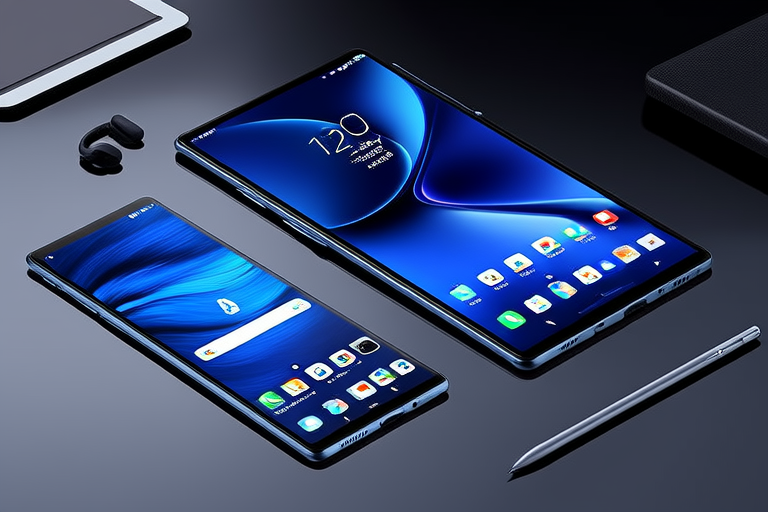“`html
Navigating the Digital Landscape: Key Features to Look for in New Smartphones and Tablets
Introduction
In today’s fast-paced world, staying updated with the latest technology trends is more important than ever. With smartphones and tablets becoming integral parts of our daily lives, it’s crucial to make informed decisions when purchasing new devices. This article aims to guide you through the key features to consider, helping you find the perfect smartphone or tablet that meets your needs.
From processing power to camera quality, each feature plays a significant role in enhancing your user experience. By understanding these components, you can make a more educated decision and avoid regretting your purchase.
Processor (CPU) Performance
A powerful processor is the heart of any smartphone or tablet, driving performance across various tasks. Whether you’re gaming, multitasking, or simply browsing the web, a robust CPU ensures smooth and efficient operation.
Common types of processors include Qualcomm Snapdragon, Apple A-series, and MediaTek. Each brand offers unique advantages:
- Qualcomm Snapdragon: Known for its excellent performance and battery efficiency, making it a favorite among Android users.
- Apple A-series: Exclusive to iPhones, these processors offer unparalleled performance and integration with iOS, ensuring a seamless user experience.
- Provides cost-effective solutions without compromising on performance, often found in mid-range devices.
Different processors affect performance in various ways. For instance, gaming requires a processor capable of handling complex graphics and calculations, while multitasking demands efficient management of multiple applications.
RAM and Storage
RAM (Random Access Memory) is crucial for handling multiple tasks simultaneously. More RAM means smoother multitasking and faster app switching. Common configurations range from 4GB to 8GB and beyond.
Here’s a breakdown of what each configuration offers:
| RAM Size | Pros | Cons |
|---|---|---|
| 4GB | Cost-effective, sufficient for basic tasks | May struggle with heavy multitasking |
| 6GB | Balances performance and cost, suitable for most users | Still limited for heavy gaming or apps |
| 8GB+ | Optimal for power users, seamless multitasking | Higher cost, unnecessary for casual users |
Storage options include internal and expandable. Internal storage is fixed, while expandable storage allows for additional memory via microSD cards. Internal storage is generally faster but less flexible, whereas expandable storage provides more flexibility at the expense of speed.
Display Quality
The display is one of the most noticeable aspects of any smartphone or tablet. Key factors to consider include screen resolution, refresh rate, and color accuracy.
Common display types include OLED, AMOLED, LCD, and IPS:
- OLED/AMOLED: Superior contrast ratios and deeper blacks, ideal for watching movies and playing games.
- LCD: Brighter screens with wider viewing angles, suitable for outdoor use.
- IPS: Balanced performance, offering good color accuracy and viewing angles.
Additional features like HDR support and adaptive refresh rates enhance visual experience. HDR provides a wider color gamut and improved brightness, while adaptive refresh rates adjust the screen’s refresh rate based on content, saving battery and improving performance.
Camera Quality
Cameras have become a focal point in modern smartphones and tablets. Key specifications include megapixels, aperture, and sensor size. Advanced features like optical zoom, night mode, and portrait modes further enhance photography capabilities.
Megapixels determine image resolution, while aperture affects light intake. Larger sensors capture more detail and perform better in low-light conditions. Optical zoom allows for true zooming without sacrificing image quality.
Real-world examples demonstrate how these features improve photography. Night mode captures clearer images in low-light environments, while portrait modes create professional-looking photos with blurred backgrounds.
Battery Life and Charging
Battery capacity and efficiency significantly impact device usability. Larger batteries offer longer usage times, while efficient power management extends battery life.
Fast charging technologies like USB-C PD and wireless charging reduce charging time. Tips for extending battery life include adjusting screen brightness, disabling unnecessary background apps, and using power-saving modes.
Operating System and Software Updates
A reliable operating system and regular software updates ensure a secure and up-to-date user experience. Popular mobile OS options include iOS and Android.
iOS is known for its seamless integration with Apple products and frequent updates. Android offers greater customization and a wide range of devices, though updates may vary by manufacturer.
Long-term support and security patches are essential for maintaining device functionality and protecting personal data.
Build Quality and Design
Durable materials and ergonomic designs contribute to a positive user experience. Different form factors, such as foldable phones and tablets with detachable keyboards, cater to diverse needs.
Water and dust resistance ratings (IP ratings) indicate the device’s ability to withstand environmental factors. Higher ratings offer better protection.
Connectivity Options
Connectivity features like Wi-Fi, Bluetooth, and cellular networks are essential for seamless communication and internet access. The transition from 4G LTE to 5G brings faster speeds and lower latency.
Other relevant technologies include NFC for contactless payments, GPS for navigation, and Bluetooth for wireless connectivity.
Conclusion
Choosing the right smartphone or tablet involves balancing various features to meet your specific needs. By considering processor performance, RAM and storage, display quality, camera capabilities, battery life, operating system, build quality, and connectivity options, you can make an informed decision.
Advancements in technology will continue to shape future devices, offering even more powerful and versatile options. Prioritize your requirements and preferences to find the perfect device for you.
“`


